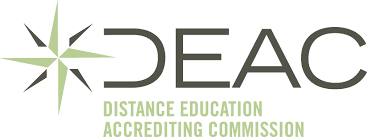Effective Error Correction For Teaching
Join a global community of over 200,000 TEFL teachers working throughout the world! Enrol me!
As EFL teachers, it’s part of our job to try to help our students not make mistakes. Yet, no matter how hard we try, our students seem to make the same mistakes again and again. What can we do to prevent our students from going crazy with frustration? What can we do to banish these mistakes from our students’ language forever? This blog will focus on effective error correction.
Here are a few steps you can take for correcting errors your students seem to make all the time. We can’t guarantee that they’ll work first time, but they’ll certainly help the cause!
Tips for effective error correction
Error correction tip 1: Noticing the error
The first step is to draw your students’ attention to the error. They need to notice the error in context in order to be able to focus on correcting it. This can easily be done by creating a text which includes the error. Show the text on your interactive whiteboard or hand out copies of the sentences to the students and ask them to physically identify the errors – either by underlining or highlighting them in some way. Asking them to do this physically and not just verbally will aid the noticing process.
Error correction tip 2: Understanding the error
The next step involves some instruction. Write one of the incorrect sentences on the board. Ask your students leading questions to create the correct version of the sentence. This can be extended by showing the students a set of sentences, some of which are correct and some of which are incorrect. Let the students work in pairs or groups to decide which are the correct ones and how to correct the incorrect ones. This can be done as a worksheet or through an activity like a grammar auction.
Error correction tip 3: Practising the language
The next step is for the students to practise the correct language. Set up a game or activity which will allow them to do this. During this activity, make sure you focus on accuracy. Students must be stopped every time they make the error in question. (You can’t correct every mistake they make but you must for whichever error is being focused on – for example, third person –s or collocations with make and do.) Your students might find this exercise frustrating at first but after a few minutes without making the mistake, they will all be proud of themselves.
Error correction tip 4: Reminders
Finally, you can put visual reminders around the classroom for language error corrections. These can be posters with the error crossed out and the correction added in. Then, whenever your students make the English mistake in the future, you do not need to correct them but you can simply point to the relevant poster and they should be able to correct themselves. The constant visuals of the posters should act as a preventative measure.
Error correction is a tricky business, especially with those few nagging errors that never seem to disappear. Using these few tips will help in driving out those errors for good. You’ll then be effective in error correction.
Comments:
Accreditation & Quality Assurance
The TEFL Academy was the world’s first TEFL course provider to receive official recognition from government regulated awarding bodies in both the USA and UK. This means when you graduate you’ll hold a globally recognised Level 3 (120hr) Certificate or Level 5 (168hr) Diploma, meaning you can find work anywhere and apply for jobs immediately.
 United Kingdom
UK
United Kingdom
UK













I am ask to you question